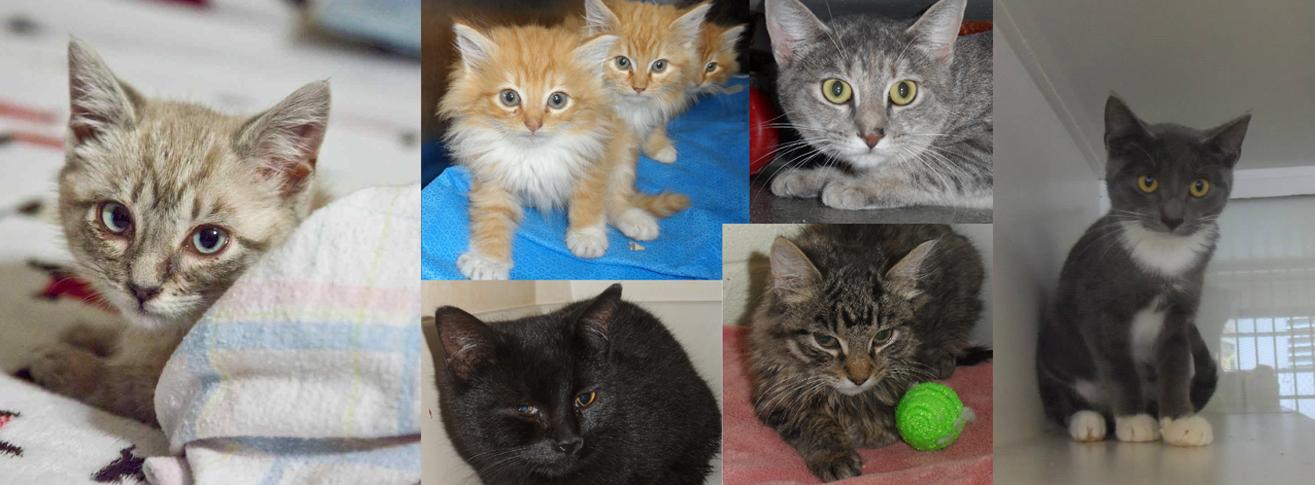Basic Enrichment
If you keep your cat inside for her physical well-being, you need to be aware of how to provide for your cat’s mental well-being. Since cats are both social creatures and predators, they must have opportunities to express their natural behaviors. An indoor/outdoor cat is able to create these opportunities herself, but if you have an indoor cat, she needs some help from you to satisfy her social and predatory drives. Not only does this help your cat, it also helps you to forge a stronger human-animal bond.
There are various ways to enrich an indoor cat’s environment. Toys are an obvious method, both self-play toys (those that the cat can play with, without your involvement) and interactive toys (those that are usually handled, at least in part, by you). Perches to view the great outdoors and a cattery are other ways to make your cat’s life more interesting. Any interaction you have with your cat is a form of enrichment, of course, but another thing you can do is teach your cat tricks.
Self-play toys
Self-play toys are especially good for cats who are left home alone while their people are away. Most self-play toys dispense food, which motivates the cat to play with the toy. The basic principle is that you fill up the toy with dry kibble, and the cat learns to manipulate the toy to release the food out of a hole.
You can either buy food-dispensing toys or make your own. Examples of purchased toys are Kitty Kongs and Roll-a-Treat Balls. A variation on this type of toy is the Deli Dome, an electronic dispenser that releases a food-filled ball on a predetermined schedule. You can make your own toys with such objects as racquet or tennis balls, or clean yogurt containers with plastic lids. Cut a hole into the ball or container, fill it up with dry kibble, and, presto, your cat is entertained. Another type of food-dispensing toy is Pavlov’s Cat, which releases dry food when a cat scratches the toy.
Self-play toys that do not dispense food are not nearly as exciting for the average cat. However, some cats find balls on springs or a wall- or door-mounted Cat Dancer (rolled cardboard paper pieces on a spring coil wire) irresistible.
Interactive toys
Interactive toys help strengthen the bond between you and your cat by letting you share fun and positive experiences. Both you and your cat can have a great time playing with wand-type toys with strings, feathers, and fabric attached. The Cat Dancer, mentioned above, can also be used as an interactive toy. Some cats enjoy playing with laser pointers, chasing the point of light around the house. Low-cost (or no cost) toys are often the cat’s preferred toys. Some suggestions are wadded-up paper or foil balls, string, and plastic rings from milk jugs.
Perches
To “virtually” let your cat spend time outside, place perches or resting areas by windows in your home. Something as easy as clearing off the back of a couch by the window can expand your cat’s horizons. A birdbath or bird feeder within sight of the window can increase your cat’s enjoyment; the birds easily habituate to their admirers. Watch out for roaming cats in your yard, though, since the sight of those other cats can trigger stress and possibly urine marking in the indoor cat.
Catteries and catios
You can give your cat some safe time outdoors by building an outdoor enclosure (often called a cattery or catio) for your cat. You can search the Internet for “cat enclosures” or “catios” to find out what other people have done. Catio Showcase (catioshowcase.com) and www.catiodesigns.com have lots of photos and helpful information about different kinds of cat enclosures. Building plans are available from Just4Cats: www.just4cats.com. If you want to build from a kit, you can order a kit for a cattery from C&D Pet Products: www.cdpets.com.
Videos
Videos specifically designed to interest cats have recently been developed. Some cats might enjoy them, but, anecdotally, most cats do not seem interested in watching television.
Teaching your cat tricks
Cats can be taught any number of tricks, from “sit” to “down” to “wave.” To be successful, you must use positive reinforcement methods (such as clicker training) since most cats cannot be forced to do something they don’t want to do!
Whatever types of enrichment you choose for your cat, make sure you play safe. Cats are capable of eating almost any object, and many objects can cause serious problems if they are eaten. For example, string objects should be used only with supervision. Caution must also be used when playing with a laser pointer. The laser can damage your cat’s vision, and some cats may begin to focus too much on the moving light. Also, keep in mind that any other pets or children in your house can potentially choke on smaller toys. Consult with your veterinarian if you have any questions.

